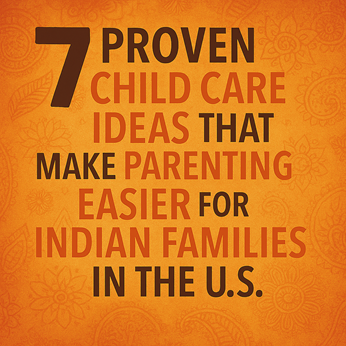How to Reduce 104 Fever in a Child?

When your child has a fever of 104°F, it can be a distressing experience. While fever is the body's natural response to infection, a high temperature requires prompt attention to ensure the well-being of your child. This guide will help you understand how to reduce a 104°F fever and when to seek professional medical care.
1. Understand the Cause of the Fever
Before taking action, it's crucial to determine the cause of the fever. High fevers can result from common infections like the flu, bacterial illnesses, or even a viral infection. Knowing the cause helps guide the right course of treatment and care.
2. Keep Your Child Comfortable
The primary goal during a fever is to keep your child comfortable while supporting their immune response. Here are steps you can take:
- Ensure Hydration: High fevers can lead to dehydration. Offer plenty of fluids like water, clear broths, or oral rehydration solutions.
- Dress Comfortably: Avoid heavy clothing and use lightweight clothing and blankets to prevent overheating.
- Rest Is Key: Encourage your child to rest, as this helps the body fight off illness effectively.
3. Use Fever-Reducing Medications
Consider over-the-counter fever reducers like acetaminophen (Tylenol) or ibuprofen (Advil) to help bring down your child's fever. Always follow the recommended dosages based on your child's age and weight, and consult a healthcare professional if you are unsure.
Note: Avoid giving aspirin to children, as it may lead to serious complications such as Reye’s syndrome.
4. Lukewarm Sponge Bath
A lukewarm sponge bath can help cool down your child's body temperature.
- How-To: Gently sponge their skin with lukewarm water. Avoid using cold water or ice baths, as this can cause shivering, which may increase body temperature.
5. Monitor for Warning Signs
While reducing the fever, keep a close eye on your child’s symptoms. Seek immediate medical attention if your child experiences:
- Difficulty breathing or rapid breathing.
- Persistent vomiting or diarrhea.
- Severe headache, confusion, or lethargy.
- Rash or unexplained bruising.
High fevers can sometimes indicate serious underlying conditions, so timely intervention is essential.
6. Maintain a Calm Environment
Keeping your child calm and reducing any stress around them can be beneficial. Offer comfort and reassurance to ease their discomfort. Ensure their environment is quiet, cool, and conducive to rest and recovery.
7. Consult a Healthcare Professional
If your child’s fever does not subside within a few hours, or if their symptoms worsen, it’s critical to reach out to a healthcare provider for advice. Persistent high fevers may need further diagnosis and intervention to determine the root cause.
Final Thoughts
Reducing a 104°F fever in a child requires a combination of home care measures and a watchful eye on symptoms. While most fevers can be managed at home, always trust your instincts as a parent—when in doubt, seek professional help.
Connect with Sulekha
Sulekha Care Services is the best in connecting care seekers and care providers across the USA and Canada. For more insights, expert care services, and helpful guides like this, be sure to explore our platform and stay tuned for future content!
Take the next step toward your goals
Share your requirement and find the best care providers in your area
-
Looking for a caretaker’s job? Build your profile and get in touch with families in your vicinity.
-
Discover nannies, babysitters, cooks, housekeepers, pet sitters, and elder care under one roof.
-
Get all the support you need to run a successful care center.
-
Search for appropriate centers near you depending on your needs.
Care Corner Insights: Blog Library

Best Child Care Hacks for Busy Indian Moms and Dads in the U.S.
Balancing work, home, and parenting is challenging, especially for Indian parents living in the U.S. Between cultural expectations, school schedules, extracurricular activities, and household responsibilities, managing daily life can often feel overw

A Revolutionary Guide for Indian Families in California
Living in California offers incredible opportunities, but Indian families often face unique challenges—balancing cultural values, adapting to a fast-paced lifestyle, handling child care, navigating school systems, and building a strong community away

8 Powerful Secrets to Raising Happy Kids While Working Full-Time in San Diego, CA
Balancing a demanding full-time job with raising happy, emotionally secure kids isn’t easy—especially in a vibrant, fast-paced city like San Diego. But with the right strategies, you can create a joyful, connected home environment without burning out

What’s the Best Way to Find a Trustworthy Indian Nanny in Fremont, CA ?
Hiring a nanny for your family is a big decision, especially when you want someone who understands your cultural values and parenting style. If you’re looking for a trustworthy Indian nanny in Fremont, CA, here are some effective strategies to make t

7 Proven Child Care Ideas That Make Parenting Easier for Indian Families in the U.S.
Raising children in the U.S. comes with a unique blend of opportunities and challenges—especially for Indian families trying to balance cultural values, busy work schedules, and daily childcare responsibilities. These seven proven childcare ideas can

9 Must-Know Tips for Hiring a Nanny in San Jose
Finding the right nanny for your family in San Jose can feel like a huge task — especially when you want someone who is trustworthy, experienced, and a perfect match for your child’s needs. Whether you’re a first-time parent or looking to replace you

10 Revolutionary Child Care Tips Every Indian Family in California Should Know in 2025
1. Bring India Home — Every Day Your children might grow up in California, but they can still grow with India. Let Indian traditions live inside your home — evening prayers, storytelling in your native language, or cooking regional dishes together.

Deep Cleaning Your House: Room-by-Room Checklist for a Thorough Clean
A sparkling clean home isn’t just about looks—it’s about health, comfort, and peace of mind. Whether you’re prepping for a festival, hosting guests, or just tired of the clutter, a deep clean can transform your space. But where do you start? Here’s a

What are Senior Apartments? Experts Explain Independent Living for Older Adults
As we age, our needs and lifestyles evolve—but one thing remains constant: the desire for independence. Senior apartments are designed precisely with this in mind, offering older adults a living arrangement that balances freedom with comfort, safety,

Baby Sleep Problems: What is Sleep Regression and How to Handle It
If you’re a parent, you know that baby sleep is one of the greatest mysteries of life. One day your little one is snoozing like an angel, and the next day they’re suddenly waking up every hour, fussing, or refusing to nap. Before you panic, there’s a